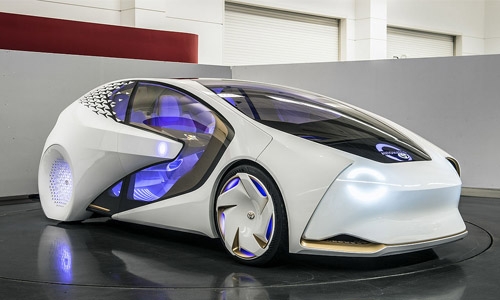From Toyota: vehicles driven by emotions
Toyota will reveal its vision for future mobility at this week’s Tokyo Motor Show with two tiny electric runabouts that predict drivers’ emotions and guide them away from danger.
The Concept i-Ride and Concept i-Walk flesh out the Concept-i series of vehicles that Toyota began introducing at the Consumer Electronics Show in January with the four-seat Concept-i car.
The Concept i-Ride is a two-seat pod car intended to perform in crowded city streets and as a personal mobility option for the elderly or people with disabilities. Its gull-wing doors open wide to allow easy loading and unloading of wheelchairs, and it uses a joystick instead of pedals.
The new Concept i-Walk is a three-wheel scooter similar to a Segway. Toyota envisions the trike as a way to zip around pedestrian zones or tourist sights.
Both concepts, presented at a press preview of Toyota’s Tokyo Motor Show plans, are battery-powered and positioned as having ride-sharing potential. The Concept-i Ride would have a range of 62-93 miles, while the Concept i-Walk would cruise up to 12.4 miles on a full charge.
The series name is a play on the Japanese word for love, which is pronounced like the letter “I”. It reflects Toyota’s desire to imbue its intelligent cars of tomorrow with an emotional connection to the driver, rather than treating them as just utilitarian appliances. Toyota said it will start road testing some of the Concept-i autonomous driving and artificial intelligence technologies in Japan around 2020.
The common thread is an artificial intelligence system that taps deep learning to absorb the driver’s habits and behaviour, make predictions and suggestions and protect the occupants.
By monitoring the driver’s eye movements, facial expressions and gestures, the cars aim to predict if the driver is becoming sleepy or irritated. Current systems can recognize fatigue or anger after the fact, but Toyota believes that information comes too late. Toyota wants a system that can predict the driver’s state of mind. If a driver is becoming annoyed by heavy traffic and beginning to huff, the computer might respond by inflating and deflating the seat at a slow, rhythmic pace.
That could slow the driver’s breathing, helping to take the edge off.
Related Posts

